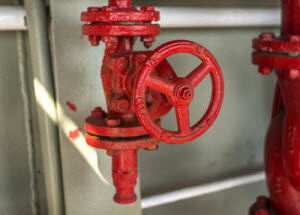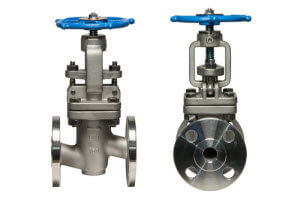Mechanics of High Pressure Relief Valves
Any system or vessel produces high levels of pressure, at times too much for the system to handle. However, there’s something that can ensure protection and consistent stable operation in overpressure events: high pressure relief valves.
Read on for more information about the mechanics of high pressure relief valves.
High Pressure Relief Valves: An Overview
 High pressure relief valves are vital to many piping systems and vessels. From electronic to pneumatic to hydraulic systems, they all need a high pressure valve to ensure protection and safety.
High pressure relief valves are vital to many piping systems and vessels. From electronic to pneumatic to hydraulic systems, they all need a high pressure valve to ensure protection and safety.
In the event of an overpressure situation where the pressure of the system is above the regulator’s setpoint, these valves will vent gas or liquid away from the vessel or system to a safe location. This ensures consistently safe pressure levels and prevents damage and complete system failure. Once the vessel or system has normalized, the relief valves will close until they’re needed again.
High pressure relief valves are known to be one of the most reliable types of overpressure protection and present numerous benefits as well. For example, they don’t block normal flow through a line, and they don’t negatively affect regulators. On top of that, high pressure relief valves act as alarms during an overpressure event.
High Pressure Relief Valves vs. Safety Valves
High pressure relief valves are commonly referred to as safety valves. However, these are two different devices.  A high pressure relief valve opens gradually depending on the system’s overall pressure levels. As pressure increases, the valve’s opening gets bigger to maintain stability.
A high pressure relief valve opens gradually depending on the system’s overall pressure levels. As pressure increases, the valve’s opening gets bigger to maintain stability.
Safety valves tend to be used for more emergency situations. They operate similarly to high pressure valves, but they open instantly to their full capacity as soon as the system hits the set pressure of the valve.
Types of High Pressure Relief Valves
There are numerous types of high pressure relief valves. The most common are a spring-loaded pressure relief valve, a balanced bellows valve, and a balanced piston valve.
According to Wermac.org, the spring-loaded pressure relief valve is designed with a valve inlet or nozzle mounted on the pressurized system, a disc against the nozzle to prevent flow under normal system operating conditions, and a spring to hold the disc closed. This type of valve can also be adjusted to specific pressures.
Wermac.org also mentions that a balanced bellows valve and a balanced piston valve should be used when superimposed back pressure is variable. These valves include a pressure area equal to the seat area of the disc as well as a Bonnet that’s vented to keep the pressure area exposed to atmospheric pressure. This will also provide an easier way to detect leaks in the bellows or pistons.
Other types of pressure relief valves are:
- Pilot-operated pressure relief valve
- Vacuum relief valve
- Power-actuated relief valve
- Temperature-actuated relief valve
CPV Manufacturing offers an array of high pressure relief valves. To learn more about these and other available products, contact us today!

